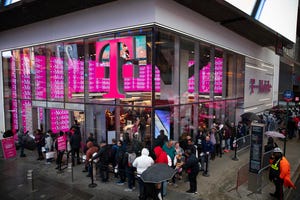Restructured carriers may put off core-router buys, making life even harder for startups
April 29, 2002

BURLINGAME, Calif. -- As massive restructurings hit the service provider world, there is a rising fear that core router upgrades could be put off indefinitely, according to discussions here last week at an NGN Ventures panel on core routing startups.
Startups are particularly worried that once bankrupt carriers have written off lost networking assets and improved their balance sheets, lower bandwidth prices will force the carriers to "sweat out" their existing networks and put off upgrades until their equipment can no longer handle the traffic load (see Report: Core Router Market Falls 22%).
David House, chairman, president, and CEO of Allegro Networks Inc. acknowledged that declining carrier asset values are not helping matters. But even if carriers are now spending less because of this, "they are still spending billions," to handle more data in their networks, he said, "and they'll keep spending where the growth is."
Startups found themselves on the defensive here, wrestling with questions from the audience that reflected a swell of doubt about the near future of the core-routing business.
One skeptical attendee tried to put the panelists on their heels, asking: If carriers can't make money off data services now, why would they want to buy your gear and scale their networks?
"Carriers have always invested up front in a business that they know will be their future," said House. "The idea that [carriers] cannot continue to invest would be death."
Others bullishly insisted that carriers will be forced to pay the price of constantly rising IP traffic.
"You can only sweat assets for so long," said Brian Barry, CEO of Hyperchip Inc. "At some point [service providers] will have to make money from packets."
"When the excess capacity in the network runs out, [Internet] users will not stop creating more traffic," said Larry Roberts, chairman and CTO of Caspian Networks. "There may be some consolidation among backbone carriers, but even with fewer carriers there will still be the same amount of Internet traffic."
"Carriers can make money on IP services, they just don't have the right tools now," added Barry.
Agreeing that carriers will someday buy next-generation routers, the panel admitted their challenge is to survive until such spending takes place. "That's why we raised the money we did," said Roberts, whose company recently recapitalized. "You have to be able to last."
Delays in the startup world raise another question: What does it mean for routing kingpin Cisco Systems Inc. (Nasdaq: CSCO)?
Several discussions about routing focused on limitations of today's core routers, Cisco's specifically. Service providers, it seems, tend to buy a pair of routers for every one needed so that they can build a redundant network.
Roland Acra, VP and general manager of Cisco's Internet Routing Group, replied that "there is a lot of mythology attached [to Cisco] because we were lazy and sloppy as an industry." He said that carriers who bought routers in pairs were focused more on quick growth than reliability.
Acra says despite his competitors' knocks against Cisco, the company's core routers have achieved so-called "five nines" reliability in service provider networks. (And, he said, it's up to Cisco's customers whether to identify themselves.)
He added that startups will have a tough time breaking into the two-horse core router race between Cisco and Juniper Networks Inc. (Nasdaq: JNPR), because they'll need to be skilled in software, hardware, and silicon, all of which can be very expensive to a young company (see Juniper Goes Terabit With the T640). "Admission to the club is a trick, because they have to hit on many cylinders at once."
However, thanks to the evolving data network, incumbent equipment providers may eventually find their installed bases disadvantageous, according to Geoffrey Yang, a general partner at Redpoint Ventures: "An installed base is a double-edged sword. Can you make [old] software do what it wasn't originally designed to do? It could be an issue and might open up an opportunity for startups."
— Phil Harvey, Senior Editor, Light Reading
http://www.lightreading.com
You May Also Like









